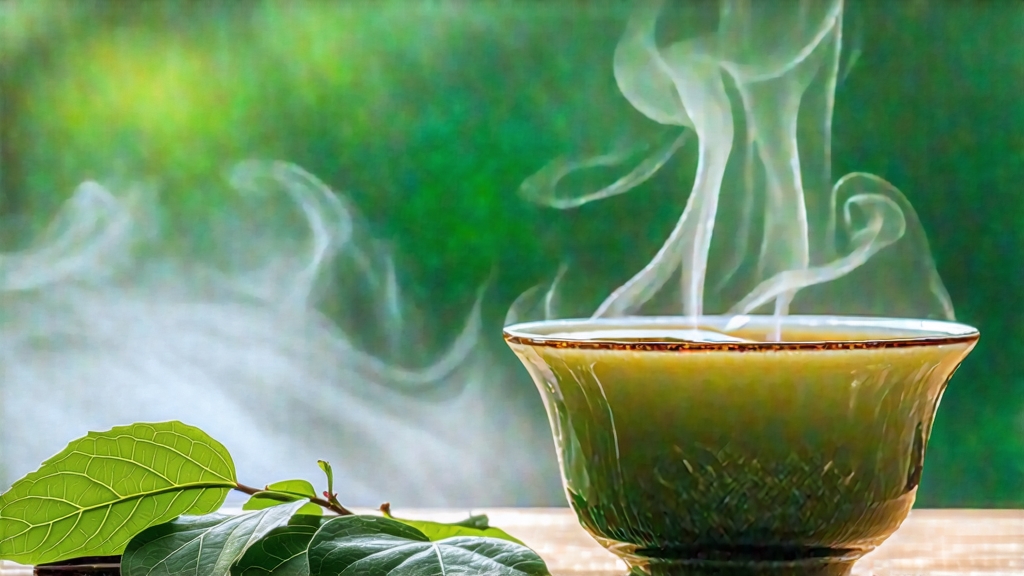
Tie Guan Yin, literally “Iron Goddess of Mercy,” is the most celebrated sub-variety of Chinese oolong. To many Chinese, its name evokes not only a tea but a complete cultural icon—part folklore, part craft, part daily ritual. First documented in the Yongzheng era (1723-1735) of the Qing dynasty, the cultivar is native to Anxi County, Fujian Province, a mist-shrouded granitic range where morning clouds slow leaf growth and concentrate aromatic compounds. Local monks credit the discovery to a devout farmer named Wei Yin, who is said to have found an iron statue of Guan Yin in a crevice between cliff-side tea trees; after praying to the goddess, the farmer was rewarded with a uniquely fragrant tea. Whether myth or marketing, the story underscores the spiritual aura that still surrounds every basket of fresh leaves.
Botanically, Tie Guan Yin belongs to the Camellia sinensis var. sinensis species, but it has diverged into two clonal lines: the traditional “Red Heart” (hong xin) and the hardier “Green Heart” (qing xin). Red Heart produces smaller yields yet delivers the most haunting orchid aroma, while Green Heart offers a lighter, milk-sweet cup and tolerates modern mechanization. Over three centuries, Anxi horticulturists have also selected seasonal flushes—spring, autumn, and the prized “spring-autumn” (yu qiu) picked during the brief cool spell before Mid-Autumn Festival—each expressing different balances of floral top notes and mineral depth.
Processing Tie Guan Yin is a choreography of timing and temperature that stretches across thirty-six hours. Picking begins at dawn when two leaves and a bud still hold overnight dew; any later and the sun burns off the volatile jasmine-lactones that give the tea its signature perfume. The leaves are first solar-withered for twenty minutes, just long enough to reduce surface moisture without bruising the cell walls. They are then moved onto bamboo trays indoors for a longer “cooling” wither that lasts two to four hours, during which enzymatic activity starts converting grassy aldehydes into sweeter alcohols.
What follows is the critical “yao qing” or rocking-green step, unique to oolong. Experienced artisans toss the leaves into the air, letting them land on the tray’s slats; the gentle impact bruises the margins while keeping the veins intact. This partial rupture exposes catechins to oxygen, launching a controlled oxidation that will halt at 20-30 %—far less than the 60-80 % of traditional Da Hong Pao yet more than the 5-10 % of green tea. The rhythm of tossing accelerates as the leaf temperature rises; masters listen for a rustle that sounds like distant rain on banana leaves, the auditory cue that oxidation is peaking.
Heat is applied next in a 250 °C drum roaster for ninety seconds, a flash kill-green that locks in the floral bouquet. After cooling, the leaves enter the shaping phase: they are wrapped in square cloth bundles and rolled under mechanical pressure into the characteristic half-ball “dragonfly head” form. This repeated bundling and rolling fractures inner cells, allowing sap to migrate outward and crystallize as aromatic oils. A final low-temperature bake, sometimes over charcoal made from local longan wood, reduces residual moisture to 3 % and adds a whisper of smoked caramel. The entire cycle is repeated up to three times for premium grades, each bake lighter than the last, a technique known as “slow fire nurturing fragrance.”
Modern Tie Guan Yin is marketed along a stylistic spectrum. “Clear fragrance” (qing xiang) teas are baked only once, yielding a jade-green leaf liquor that smells like fresh white orchids and tastes of steamed zucchini flowers with a cooling sugarcane finish. “Traditional fragrance” (chuan tong xiang) versions endure deeper charcoal roasting, emerging with amber liquor, toasted almond notes, and a longan-sweet aftertaste that lingers minutes after swallowing. Between these poles lies the controversial “cream fragrance” (nai xiang) style, where leaves are briefly steamed over milk vapor to create a velvety mouthfeel reminiscent of rice pudding—purists scoff, yet it has become a gateway tea for younger drinkers.
To brew Tie Guan Yin well, one must respect its dual personality: half green freshness, half oolong body. A 120 ml gai